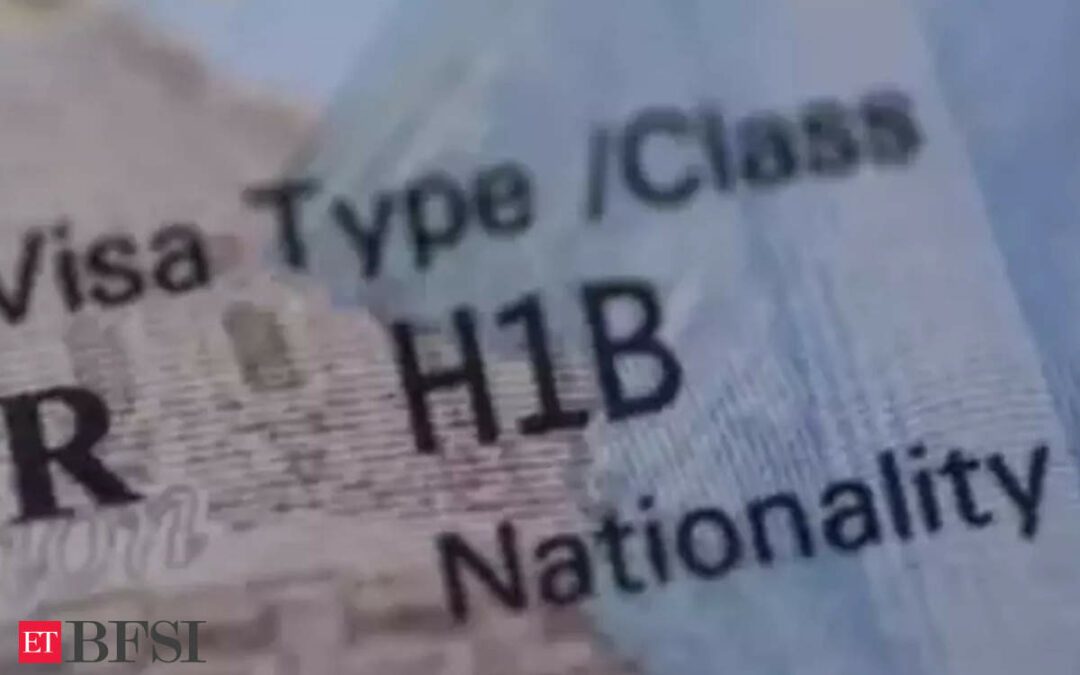MUMBAI: H-1B denial rates in fiscal year (FY) 2023 (12-month period ended Sept 30, 2023) remained low compared to the Trump-years but ticked up from FY 2022, according to a new National Foundation for American Policy (NFAP) study.
Key highlights of this study are below:
Medium sized applicants:
Increased denials for approximately 200 medium-sized filers (who had made ten to hundred H-1B applications) accounted for approximately two-thirds of the increased denial rate between FY 2022 and FY 2023. The H-1B denial rate for initial employment (new H-1B applications for initial employment that count against the annual cap of 85,000) was 3.5% in FY 2023, higher than the 2.2% rate in FY 2022. However, this as much lower than the 24% rate in FY 2018 under Donald Trump.
Large sized applicants:
Only a few of the 25 companies with the most approved H-1B applications for initial employment experienced higher denial rates in FY 2023. Examining data for FY 2022 and FY 2023, the NFAP analysis found that in general the more H-1B applications an employer submits, the lower its denial rate. Employers with 101 or more H-1B applications for initial employment in FY 2023 had a denial rate of only 1.2%, compared to 4.1% for employers with two applications and a 4.7% denial rate for employers that filed one H-1B application. This study adds that employers that file more H-1B applications likely possess better internal processes and legal representation, resulting in fewer errors when selecting applicants and completing applications.
Top sponsoring companies for H-1B visas:
Amazon had the most approved H-1B applications for initial employment in FY 2023. However, the approved number of 4,052 applications was much lower than 6,396 which were approved in FY 2022. Cognizant had the second most H-1B applications in FY 2023 approved for initial employment at 2,597, followed by Infosys (2,171), Google (1,267), TCS (1,174). USCIS records cases in the fiscal year they are approved, not by cap year, which means a company’s initial employment data for FY 2023 might include cases filed in different cap years.
Popular areas:
Employers in California (19,336), Texas (17,824), New Jersey (10,710), New York (9,237) and Virginia (7,679) had the most approvals for H-1B applications for initial employment in FY 2023.
Popular occupational fields:
Approximately half of approved new H-1B applications in FY 2023 (51.7%) were in professional, scientific and technical services. Second, with 14.3%, was educational services, which includes universities. Stanford had 307 approved H-1B applications for initial employment in FY 2023, the most among U.S. universities. Third came manufacturing (7.4%), followed by health care and social assistance (6.9%) was fourth. USCIS reported approximately 119,000 approved applications for initial employment in FY 2023.
Average salary for an H-1B visa holder:
The average annual salary for an H-1B visa holder in computer-related occupations in FY 2022 was $129,000, and the median salary was $123,000, according to USCIS statistics. In addition to paying the required wages, legal and government fees to file an initial H-1B petition and an extension could cost employers up to $33,365, and as high as $50,000 if including the additional cost of sponsoring an employee for permanent residence, according to an NFAP analysis. As reported by TOI, the filing fees are set to rise from April 1.
NFAP points out that the 85,000 annual limit on new H-1B applications for high-skilled foreign nationals is low, equaling 0.05% of the U.S. labor force, and remains the leading immigration problem for most tech companies. The low yearly and per-country limits for employment-based green cards also vex companies and foreign-born professionals. Employers have exceeded the US limit on H-1B applications every fiscal year for the past two decades.
Due to a series of restrictive policy changes during the Trump administration later found unlawful, the denial rate for H-1B applications for initial employment rose to 24% in FY 2018, 21% in FY 2019 and 13% in FY 2020, before a legal settlement in FY 2020 reduced denial rates below pre-Trump levels (4% in FY 2021 and 2.2% in FY 2022).
The study sums up by referring to research which indicates that restrictions on H-1B visas drive jobs and innovation outside the US. “Policies that are motivated by concerns about the loss of native jobs should consider that policies aimed at reducing immigration have the unintended consequence of encouraging firms to offshore jobs abroad,” concluded a study by Britta Glennon, an assistant professor at the Wharton School of Business at the University of Pennsylvania. “When US firms are denied H-1Bs, they go abroad, setting up new foreign affiliates and hiring talent there instead of in the US,” said Glennon and added: “For the most global multinational companies, this is at almost a 1:1 rate. The results demonstrate an important unintended consequence of immigration restrictions: the movement of jobs and talent abroad, with major implications for US competitiveness.”










